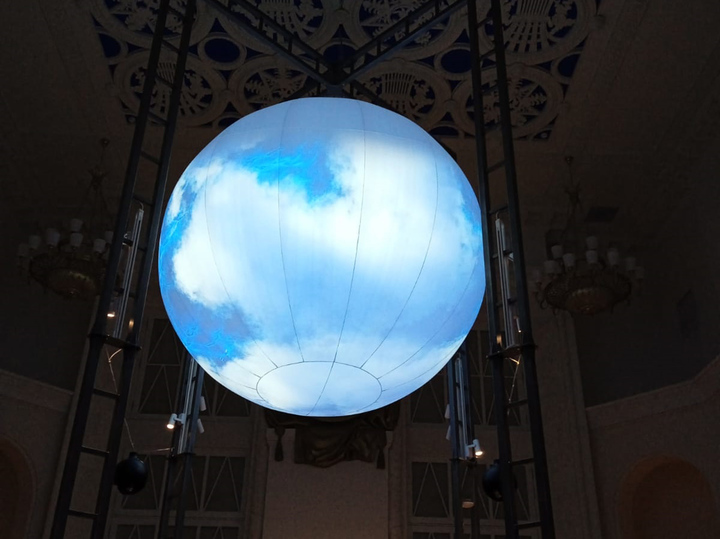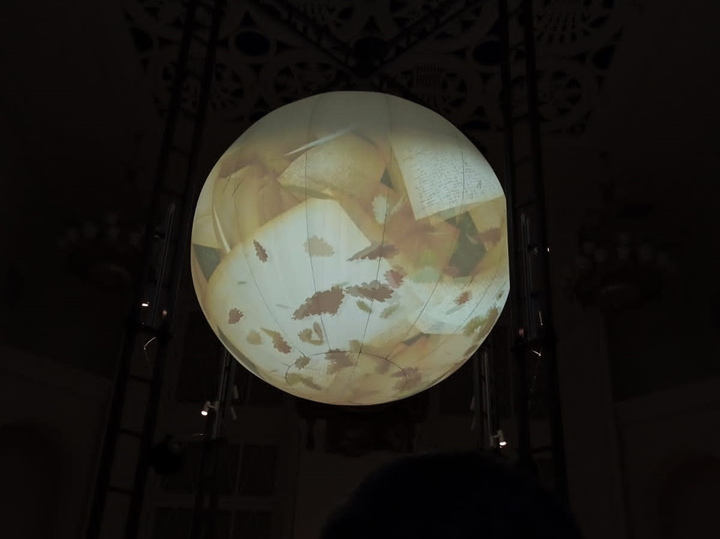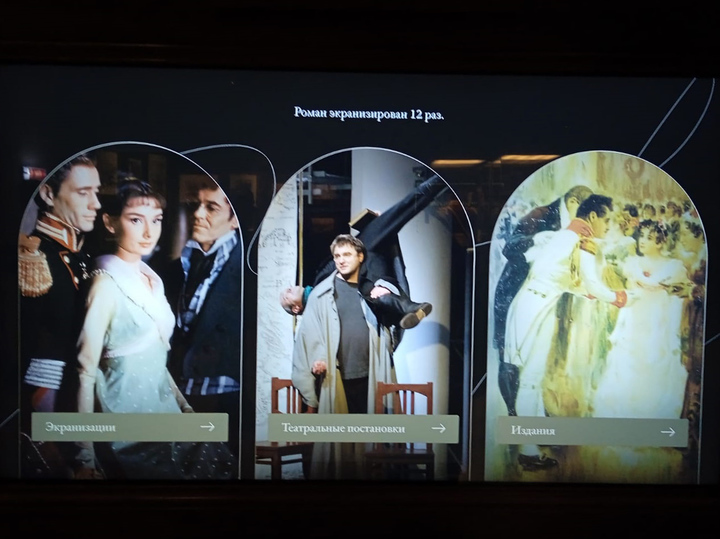“War and Peace” told using new technologies
[ad_1]
“Lev Tolstoy. War and Peace,” – behind the classic title of the exhibition presented by the State Museum of the Writer at VDNKh as part of the international exhibition and forum “Russia” hides a modern technological approach. Here visitors will be able to understand the nature of war and peace, learn to dance the mazurka and waltz, play cards from the 19th century and see the novel’s heroes come to life through an optical lens.
At the entrance to the pavilion we are greeted by the hero of the occasion, leaning on a thin cane. You don’t have to stand in the entryway for long; guests have a choice: which hall to enter first. There is no clear route here – this is not a school textbook on literature. The three wings symbolize the general idea: on the one hand we have “war”, on the other we have “peace”, and the central hall is the union “and”, embodying the personality and philosophical views of Lev Nikolaevich.
“I’m trying to influence so that young men do not go into life as empty and completely unnecessary people,” says artist Alexander Konov, whose creative workshop realized the exhibition. – Because this is precisely the path of dignity in all aspects of life, without this baggage they have nothing to do.
Raising our eyes to the ceiling, we immediately pay attention to the “Tolstoy” sphere – this is a symbol of Lev Nikolayevich, in his work the ball played a special role. Instantly the image of Pierre comes to mind, remembering in a dream the divine globe or drops of water, which were given attention in the novel. The value of the weightless configuration is nevertheless given by the projection, which is the quintessence of symbols illustrating the fatal moments of the literary epic: the famous oak tree (embodiing Andrei Bolkonsky), which at first breathes health and a riot of colors, and then falls under a furious lightning strike; a bright comet cutting through the star-strewn sky, an omen of terrible changes, or drops of water tending to the center and symbolizing life.

But the wonders of technological progress do not end there. For the first time in museum practice, an integral optical lens is used. The illustrations in it change all the time. But one element is eternally static – this is the figure of Tolstoy bending over the table: the writer hardworkingly writes his novel, while his characters, like thoughts, endlessly replace each other, as if in a dance.
The dedication to writing is also expressed in the graphic backdrops on which the paintings are presented. The fact is that the racks symbolize hundreds of thousands of words, millions of letters that fill the work and typographical letters that were used to type countless novels translated into various languages. And even the frames framing the illustrations are chosen to match the shields, helping to maintain the overall concept of the hall. However, the atmosphere doesn’t end there: if you take a deep breath and close your eyes, you can feel the sweetish notes of the books, which help you understand the ideas of the museum even better.

Having thoroughly enjoyed the master’s philosophy, we are transported to a hall dedicated to peace. There is the aesthetics of the estate, Anna Pavlovna Sherer’s salon and the indescribable atmosphere of Natasha Rostova’s first ball. The visitor can walk wherever it is convenient, studying the chapters of the novel. Each of them is illustrated with multimedia, which helps immerse yourself in the life and texture of the characters. Speaking of interactivity, it is worth mentioning the card game simulator. So, on one monitor we get acquainted with their history and rules, and on the other we will practice.
If you are more interested in the subtle soul of Natasha Rostova, then you should try the dance simulator, where you can learn the movements not only alone, but also with a partner, spinning in a gentle waltz or an energetic mazurka. However, you should be vigilant, because not far from the “ball” an evil gray wolf is lurking. Or rather, his stuffed animal, with the help of which guests can be transported to the chapter dedicated to hunting. The ferocious and sneaky beast described in the second volume appears here as a friendly guest with a kind look. Of course, we can talk about peace for a long time, but it’s time to move into the war room.

It begins with the first battles with Napoleon. While parents study historical costumes, children can take an interactive test showing who you are: Napoleon or Kutuzov – or they can run to “warm themselves” by the fire next to the heroes of the novel. Also in the hall are maps: one is dedicated to the Battle of Borodino (accompanied by illustrations and diagrams), the second is dedicated to the military actions that took place in Moscow.
The exhibition about “War and Peace” is not static – the exposition is periodically replenished with new exhibits, and the site hosts literary evenings and film screenings about the life and work of Tolstoy. “We hope that through multimedia devices we will enter the reader’s soul,” the director of the State Museum L.N. told MK. Tolstoy Sergei Arkhangelov.
[ad_2]
Source link






